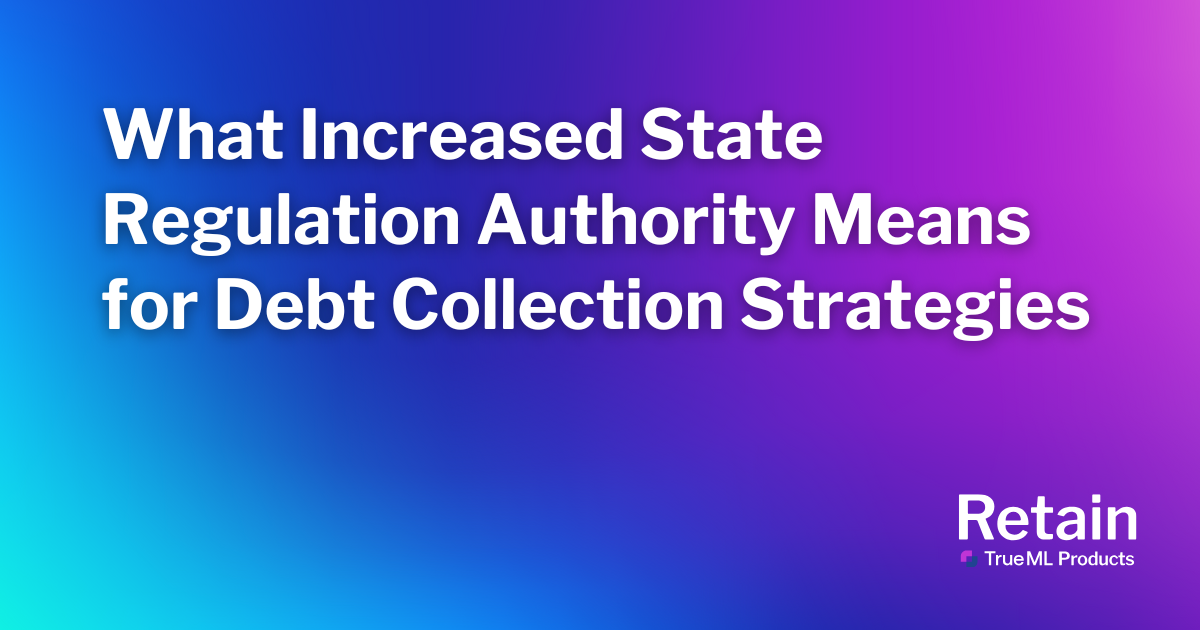So you’re ready to level up your outreach and start sending digital communications to improve customer engagement in your debt collection operations—but don’t start copy/pasting messages and clicking send just yet! There are important considerations for sending these communications that can impact your business, and they start before you even write your message. Understanding what affects your message’s ability to get delivered to the intended recipient is the necessary first step to success, and mitigating risks involved should be top of mind.
Understanding Domain Reputation
The very basis of your email operations is your email domain. Your domain is the part of an email address that appears after the @ symbol and identifies the online location of an email account. For example, if your email address is [email protected], the email domain is gmail.com. You probably have this set up to be your business name to build brand recognition or a shortened version of it that’s easier to remember and spell. Functionally, email domains are used to route emails to the correct mail servers.
Domain reputation is the overall health or credibility of your branded domain as determined by mailbox providers. You can think of your domain reputation like a credit score—the better your score, the more likely you are to get approved for a loan. Similarly, the better your domain reputation score, the more likely it is that your emails will be delivered to your intended recipient’s inbox versus getting stuck in spam or rejected. Various factors such as engagement, spam complaint rates, spam traps and bounce rates factor into your domain reputation and impact your ability to get your emails delivered.
Common bad practices in sending email include low quality content that leads to negative recipient interactions or poor email list data that results in a high quantity of undeliverable messages. If you have been engaging in bad practices when sending emails that have resulted in complaints or bounces, your domain reputation has likely taken a hit and it may need some tending to in order to recover. Conversely, if you haven’t been sending any emails or engaging in bad practices, congratulations! You likely have a neutral or good domain reputation.
Here are some best practices for maintaining a good domain reputation:
- Maintain Email List Hygiene: Regularly remove unsubscribed, bounced or inactive email addresses from your send list.
- Enable One-Click Unsubscribe: Allow recipients to easily opt out with a clearly identifiable, single-click unsubscribe link.
- Authenticate Your Emails: Implement SPF, DKIM and DMARC protocols to verify the legitimacy of your emails and prevent spoofing (making it appear as if the message came from a trusted email).
- Monitor Deliverability: Track your email delivery and deliverability rates.
- Consider Your Sending Frequency: Spikes in send volume can be a red flag—stick to a consistent send frequency and avoid the mass blast.
- Send Relevant, Non-Spammy Content: Craft subject lines and messages with targeted content and avoid common spam words that get your emails flagged.
- Address Spam Complaints ASAP: Respond to any spam complaints in a timely manner and figure out why they happened so you can adjust your strategy.
Risks of a Bad Domain Reputation
So how does domain reputation impact your digital debt collection communications? It’s pretty straightforward—if your message never reaches your delinquent customer, there is no opportunity for engagement or repayment.
By implementing good email practices, you can ensure your domain reputation remains positive so you can continue sending emails effectively and avoid the main risk associated with a bad domain reputation: breaking your domain. Broken domains can do more than just prevent external email delivery, they can affect anything using your domain and impact your ability to send internal emails, use your business website, link back to your domain properties or can get your domain blacklisted altogether.
- Precaution: Mitigating the risk of bad domain reputation involves adhering to best practices, using good data and closely monitoring results to make adjustments to email sending activities as needed, especially as your send volume grows and increases opportunities for things to go wrong. This is a case when “set it and forget it” just won’t work—–ensure you or your provider are paying close attention to your domain reputation so you can reap the benefits of digital communications at scale.
The Retain Difference
So how does Retain perform above and beyond the competition for managing and maintaining your domain reputation?
Retain’s dedicated Email Operations Team helps set up your email program to mitigate risks to your domain reputation and then proactively monitors and makes adjustments to email programs, along with using our patented machine learning engine to dynamically make updates in real-time. Our team of deliverability experts also proactively stays on top of Email Service Provider (ESP) best practices and maintains relationships with ISPs for optimal email acceptance rates.



